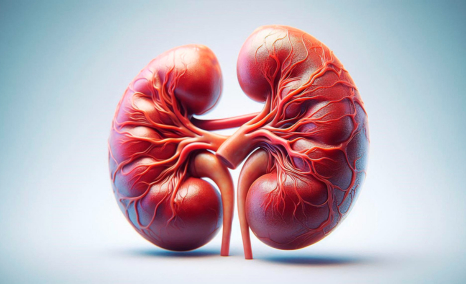Treatment-resistant Hypertension: Insights into the Challenges and Solutions
Apr 01, 2022
Table of Contents
Resistant Hypertension (RHTN) is defined as uncontrolled blood pressure despite the use of ≥3 antihypertensive agents of different classes, including a diuretic, usually thiazide-like, a long-acting calcium channel blocker, and a blocker of the renin-angiotensin system, either an ACE (angiotensin-converting enzyme) inhibitor or an ARB (angiotensin receptor blocker), at maximal or maximally tolerated doses.
Secondary causes of Resistant Hypertension include Obstructive Sleep Apnea, Renal Artery Stenosis, Renal Parenchymal Disease, and Primary Aldosteronism, along with some uncommon Resistant Hypertension causes such as Pheochromocytoma, Cushing’s disease, thyroid, and parathyroid dysfunction, and aortic coarctation.
Downloads
Click Here To Get the Article in PDF
Recent Articles
- New Clinical Developments in the Pulmonary Arterial Hypertension Treatment Domain
- Ethicon’s ETHIZIA Hemostatic Sealing Patch; FDA Approves Medtronic’s Minimally Invasive Device to...
- Booming Healthcare sector in MENA: Lucrative opportunity for Global pharma players
- Commercial
- The Rise of Energy Drinks: Power in a Can or a Health Hazard?
Resistant Hypertension Symptoms may appear when blood pressure first begins to rise or during a hypertensive crisis when levels are incredibly high. Headaches, shortness of breath, chest pain, and nosebleeds are some of the Resistant Hypertension symptoms. To confirm persistently elevated blood pressure levels, the Resistant Hypertension diagnosis necessitates using a good blood pressure technique. Pseudoresistance, including lack of blood pressure control due to poor medication adherence or white coat hypertension, must be ruled out.
The pathophysiology of Hypertension can be attributed to aldosterone excess in more than 20% of patients with resistant hypertension. Existing dogma attributes the increase in blood pressure seen with increases in aldosterone to its antinatriuretic effects in the distal nephron. However, emerging research has identified and begun to define the function of amiloride-sensitive sodium channels and mineralocorticoid receptors in the systemic vasculature; challenges impaired natriuresis as the sole cause of aldosterone-mediated resistant hypertension.
The treatment for Resistant Hypertension is focused on the addition of fourth-line therapy where blood pressure is not controlled by treatment with three drugs, described by NICE as A + C + D: that is, an ACE inhibitor or an angiotensin II receptor blocker (A), a calcium channel antagonist (C), and a thiazide or thiazide-like diuretic (D). The most recommended drug therapy for Resistant Hypertension as a fourth-line agent is spironolactone in patients with potassium of <4.5 mmol/L who are likely to respond to a mineralocorticoid receptor blocker. For patients with potassium of >4.5 mmol/L, it is recommended that the existing diuretic (thiazide or thiazide-like) be doubled.
Treatment-resistant Hypertension Epidemiology Insights
The 7MM Treatment-resistant Hypertension prevalent cases were over 16 million in 2021. The United States accounted for the highest number of Treatment-resistant Hypertension cases, followed by EU5 countries and Japan. Japan had approx 2 million cases of Treatment-resistant Hypertension in 2021, while the EU5 countries together accounted for nearly 4.5 million cases, as per DelveInsight’s assessments.
Moreover, among the European countries, Germany had the highest number of prevalent cases of treatment-resistant hypertension (>1.4 million) in 2021. At the same time, the UK had the lowest number of prevalent cases (~600k) in 2021, which as per DelveInsight’s estimates, are expected to reach around 640,000 cases by 2032.
Treatment-resistant Hypertension Market Scenario
The main strategies adopted for treatment-resistant hypertension include nonpharmacological and pharmacological interventions. Nonpharmacological interventions include lifestyle modifications, a DASH diet, reduced salt intake, restricted alcohol consumption, etc. Pharmacological interventions include withdrawal of interfering Resistance Hypertension medications, optimization of diuretic therapy, mineralocorticoids, combination therapy, and the use of spironolactone as the fourth agent for treating Resistant Hypertension.
Disease associations and other organized programs for Treatment-resistant Hypertension patients are established in most regions. Some prominent ones include the American Society of Hypertension (ASH), World Hypertension League, Pan American Health Organization (PAHO), International Society of Hypertension (ISH). These organizations provide opportunities to map Treatment-resistant Hypertension patients and improve their access to innovative Resistant Hypertension treatment and outcomes. Soon, establishing country-wide registries in cooperation with these centers may also help tackle the disease further.
According to the first comprehensive global analysis of trends in Hypertension prevalence, detection, treatment, and control, led by Imperial College London and WHO, the number of adults aged 30–79 with hypertension has increased from 650 million to 1.28 billion in the last 30 years. Low awareness rate, moderate treatment rate, and high levels of nonadherence result in an increased incidence of uncontrolled hypertension in diagnosed and treated Hypertension patients.
Treatment-resistant Hypertension (RHTN) is known to be associated with higher rates of major adverse cardiovascular diseases events and increased mortality relative to nonresistant hypertension. The patients with Treatment-resistant Hypertension were older, heavier, less likely to have a high income, and differed in additional ways from the much larger group with non-resistant Hypertension. A multivariate analysis found that RHTN was associated with USD 2,413 in excess annual medical expenditures and USD 1,253 in excess total prescription expenditures, for a total of USD 3,647 excess total annual healthcare expenditures per person, compared with subjects with non-resistant Hypertension.
According to DelveInsight, the lion’s share of the Treatment-resistant Hypertension market remains with the United States throughout the forecast period (2019–2032). The Treatment-resistant Hypertension market size in the US was USD 9,298.5 million in 2019 and is likely to reach USD 15 billion by 2032.
In 2019, among EU5, Germany accounted for the largest Resistant Hypertension market size (~USD 860 million), followed by Italy with (approx. USD 600 million), whereas the UK accounted for the smallest market size (~USD 350 million).

The future of the Treatment-resistant Hypertension market looks promising with emerging therapies such as are firibastat (Quantum Genomics), aprocitentan (Idorsia Pharmaceuticals), CIN-107 (CinCor Pharma), IONIS-AGT-LRx (Ionis Pharmaceuticals), and patiromer (Vifor Pharma), among others.
Market Leaders in the Making
With a few promising drugs for Resistant Hypertension in the pipeline, the Treatment-resistant Hypertension market size is projected to grow. Among the emerging therapies, the most promising ones include firibastat (Quantum Genomics) – a Phase III Glutamyl aminopeptidase inhibitors, aprocitentan (Idorsia Pharmaceutical) – a Phase III endothelin receptor antagonists, and CIN-107 – Phase II aldosterone synthase inhibitor (ASI), among others.
Expected Roadblocks
Lifestyle factors such as excessive alcohol and salt intake contribute to the presence of Resistant Hypertension. Large amounts of alcohol consumption (three or more drinks per day) have an important dose-related effect on BP levels in both normotensive and hypertensive patients. Usually, patients with Resistant Hypertension present an average sodium intake that exceeds 10 g/day. Salt not only increases BP levels but also blunts the antihypertensive effect of the BP-lowering drugs. These effects are much more pronounced in salt-sensitive patients (elders, African-Americans, and patients with chronic kidney disease).
Moreover, Obesity and increased body mass index significantly increase BP levels. The mechanisms that induce hypertension in those patients include activating the sympathetic nervous system and renin-angiotensin-aldosterone system and insulin resistance, and impaired sodium excretion. The adoption of current European Society of Cardiology/European Society of Hypertension guidelines on lifestyle changes may significantly decrease BP levels in those patients and contribute to BP control.
Finally, several drugs and substances may increase BP levels. Nonsteroidal anti-inflammatory drugs (NSAIDs) probably represent the most common agents in worsening BP control. The use of NSAIDs increases BP levels and can blunt the effect of various antihypertensive drugs such as diuretics, angiotensin-converting enzyme inhibitors, and angiotensin receptor blockers. The hypertensive effect of NSAIDs is more pronounced in patients with chronic kidney disease. Other substances that can increase BP levels are decongestants and stimulant agents used for weight loss and also contraceptives, cyclosporine, erythropoietin, and cortisone that increase BP levels mainly through fluid retention.
Obstructive Sleep Apnea, Primary Aldosteronism, and Chronic Kidney Disease represent the most common secondary causes of Resistant Hypertension, whereas several other conditions may also be responsible for treatment resistance. Despite differences in definitions, a consistent body of evidence supports the concept that RHTN is associated with an increased risk of adverse long–term cardiovascular and kidney outcomes. In a clinical study, participants with CKD and apparent RHTN had a 38% higher risk of cardiovascular events or all-cause mortality, a 28% higher risk of ESRD, or a 50% decline in GFR (Braam et al., 2017). The diagnostic workup for secondary hypertension is demanding, requires special knowledge and technology, and should be performed in specialized referral centers familiar with secondary hypertension.
Way Ahead
The incidence and prevalence of Resistant Hypertension remain unclear as there are no direct studies to evaluate this. Extrapolation of data from large-scale antihypertensive trials suggests 10–20% prevalence. The exact prevalence of Resistant Hypertension in the general population remains unknown. According to the studied populations, data from small observational studies show a wide variation (from 5% to 50%). Data from large clinical trials (designed population studies) point toward a relatively high prevalence of Resistant Hypertension (20–35%). Therefore, evaluating the prevalence of resistant hypertension requires a large, prospective, population-based study specially designed for this aim.
As per DelveInsight’s estimates, the Treatment-resistant Hypertension market landscape looks promising, studded with remarkable advances in diagnosis and treatments that will translate into a better quality of life and improved survival. The entry of the novel therapies for Resistant Hypertension to attain better healthcare will necessitate collaboration among academia, life-sciences companies, funding, regulatory agencies, decision-makers, and caregivers. In addition, expertise in navigating market access and reimbursement scenarios would be an elixir to devise successful GTM strategies for new therapies.

FAQs
Resistant Hypertension (RHTN) is defined as uncontrolled blood pressure despite the use of ≥3 antihypertensive agents of different classes, including a diuretic, usually thiazide-like, a long-acting calcium channel blocker, and a blocker of the renin-angiotensin system, either an ACE (angiotensin-converting enzyme) inhibitor or an ARB (angiotensin receptor blocker), at maximal or maximally tolerated doses.
Resistant Hypertension Symptoms may appear when blood pressure first begins to rise or when levels are extremely high during a hypertensive crisis. Headaches, shortness of breath, chest pain, and nosebleeds are some of the Resistant Hypertension symptoms.
The leading players in the Treatment-resistant Hypertension market include Idorsia Ltd, Janssen Biotech, Quantum Genomics SA, CinCor Pharma, Ionis Pharmaceuticals, Vifor Pharma, KBP Biosciences, among others.
The most promising therapies in the Treatment-resistant Hypertension pipeline include firibastat (Quantum Genomics) – a Phase III Glutamyl aminopeptidase inhibitors, aprocitentan (Idorsia Pharmaceutical) – a Phase III endothelin receptor antagonists, and CIN-107 – Phase II aldosterone synthase inhibitor (ASI).
Downloads
Article in PDF
Recent Articles
- ResMed Acquired Somnoware; Stryker Launched Q Guidance System; AlloSource’s AceConnex Pre-Sutured...
- Idorsia’s Tryvio Success in Hypertension Treatment After J&J ‘Blunder’?
- The Rise of Energy Drinks: Power in a Can or a Health Hazard?
- World Hypertension day
- The Question That Remains Unanswered: What Might Be Causing Alzheimer’s?



